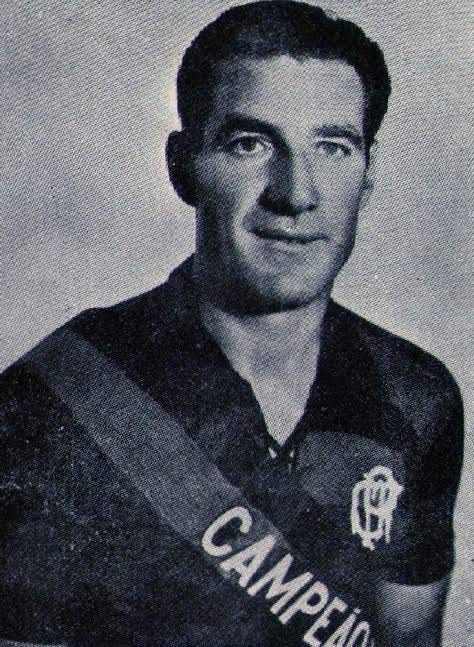Segundo Volante: Unraveling the enigmatic role
Tactical evolution, an inexorable force in the realm of Football, possesses the ability to captivate the hearts and minds of enthusiasts. And amid this extraordinary journey of evolution, arises the awe-inspiring "Segundo Volante." This exceptional role has not only sparked interest but also earned great admiration. Referred to by various names such as the "deep-lying playmaker" or the "box-to-box midfielder," the Segundo Volante embodies a crucial and irreplaceable role in contemporary football. It functions as the dynamic pivot that effortlessly links defensive and attacking transitions.
Today, we embark upon an enthralling expedition to explore the intricate facets of the Segundo Volante. We shall reveal its historical inception, decipher its fundamental attributes, and delve into its strategic significance, as we witness firsthand the profound impact it imparts upon the elegant game of Football.
Origins and Evolution of the Segundo Volante
The origins of the Segundo Volante can be traced back to the realm of South American football, particularly in Brazil and Argentina, where this position started to rise to prominence during the middle of the 20th century.
The term "Volante" is derived from Carlos Volante, a midfielder who played for the Flamengo team from 1938 to 1940, and it originally referred to the role of a ball-winning or holding midfielder. However, during the 1970 World Cup, Brazil adopted a 4-2-4 formation, in which both midfielders were referred to as Volantes.
The term "Segundo Volante" can be translated as "second midfielder," indicating its inherent duality. While the conventional roles of the defensive midfielder (No. 6) and the attacking midfielder (No. 10) had already been firmly established, the Segundo Volante emerged as a hybrid, incorporating elements from both positions.
Key Attributes of the Segundo Volante
Tactical Intelligence: The Segundo Volante must possess exceptional tactical acumen, understanding when to surge forward, contribute to the attack, or drop back to cover defensive areas.
Passing and Vision: An accurate and visionary passer, the Segundo Volante acts as the link between defense and attack, dictating play and initiating attacks from deep.
Defensive Versatility: Despite being heavily involved in the attacking phases, the Segundo Volante must be adept at tracking back and contributing defensively, providing cover for the defensive line.
Work Rate and Stamina: Given their box-to-box nature, Segundo Volantes are required to cover extensive distances throughout the match, making stamina and work rate crucial attributes.
Dribbling and Ball Retention: The ability to carry the ball forward under pressure and retain possession in tight situations is essential for a successful Segundo Volante.
Tactical Significance in Modern Football
Fluidity in Midfield: The presence of a Segundo Volante allows teams to have a more fluid midfield, seamlessly transitioning from defense to attack and vice versa.
Breaking Opposition Presses: With their dribbling and passing skills, Segundo Volantes can bypass high-pressing opponents, opening up spaces and initiating counter-attacks.
Defensive Reinforcement: In defensive phases, the Segundo Volante adds an extra layer of protection to the backline, reducing vulnerability to fast breaks.
Offensive Creativity: Their playmaking abilities enable them to unlock defenses and set up goal-scoring opportunities, making them pivotal in building attacking moves.
Impact on Modern Football
The emergence of the Segundo Volante has proven to be a game-changer in contemporary football. Numerous accomplished teams now center their strategies around players who demonstrate exceptional skills in this position. Eminent instances include Toni Kroos (Real Madrid), Fabinho (Liverpool), Frenkie De Jong (Barcelona), Casemiro (Manchester United), Thomas Partey (Arsenal), and Leon Goretzka (Bayern Munich). Additionally, the adaptability of the Segundo Volante permits coaches to venture into various formations and playing styles, ultimately resulting in a more captivating and unforeseeable game.
Formations that can take advantage of a Segundo Volante
4-2-3-1 Formation
The Segundo Volante finds an ideal home in the 4-2-3-1 formation, where they partner with a defensive midfielder in a double-pivot. This setup allows the Segundo Volante to contribute both defensively and offensively. They can support attacks, provide creative passing, and even arrive in the box for goal-scoring opportunities, while still ensuring defensive solidity with the partner's cover.
4-3-3 Formation
In a midfield trio of a 4-3-3 formation, the Segundo Volante can operate as the central midfielder, playing a crucial role in transitioning the ball from defense to attack. Their box-to-box attributes enable them to effectively link up with both the attacking midfielders and the central striker, effectively connecting the lines and maintaining a balanced structure.
3-5-2 Formation
The Segundo Volante becomes a pivotal component in a 3-5-2 formation. Sitting in front of a three-man defensive line, they can offer support to both the defense and the midfield. Their ability to cover ground and distribute the ball intelligently helps the team maintain possession and launch swift counter-attacks.
Conclusion
In conclusion, the Segundo Volante has become indispensable in contemporary football, skillfully blending defensive solidity with attacking creativity. With their strategic acumen, adaptability, and technical prowess, these midfield powerhouses have revolutionized the notion of traditional midfield responsibilities. As football progresses, the Segundo Volante will unquestionably persist as a pivotal component in shaping the future of the magnificent sport, enthralling supporters and motivating the upcoming generation of players and coaches worldwide.




